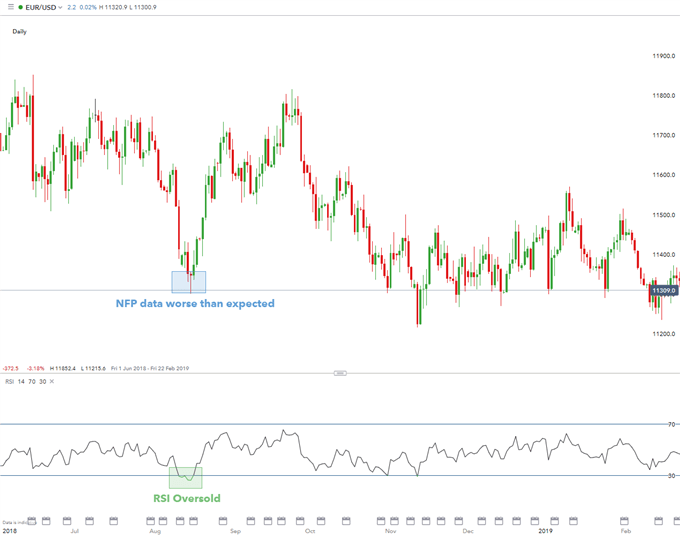FUNDAMENTAL AND TECHNICAL ANALYSIS CAN COMPLEMENT ONE ANOTHER
Fundamental and technical analysis can be combined to provide a holistic trading strategy. Traders often compare the differences between fundamental and technical analysis, however blending the two can have positive benefits. Although there are no hard facts as to which style of analysis is superior, combining the two may lead to more definitive trade choices. This article will explore various ways how to combine fundamental and technical analysis using practical examples.
WAYS TO COMBINE FUNDAMENTAL AND TECHNICAL ANALYSIS
There are numerous ways of combining fundamental and technical analysis. Below are examples of how three different technical analysis methods can be combined with fundamental analysis to provide richer insights including:
Combining range bound trading with fundamental analysis
Combining breakout trading with fundamental analysis
Using oscillators with fundamental analysis
RANGE BOUND TRADING WITH FUNDAMENTAL ANALYSIS
Range bound trading attempts to identify a price channel of a market, by which a trader uses to buy at the lower trendline support and sell at the higher trendline resistance.
The chart below shows a strong bullish (upward) trend on EUR/USD. In a strong up-trending market, traders are looking to enter or buy at the lowest possible level to maximize on the strategy. However, news events can disrupt a range bound market. In this case, the trader would look to avoid open trades around the time of the news release (poor ‘retail sales’ and ‘durable goods orders’ figures). The chart shows clearly this disruption as indicated, after which the price level returns to preceding range bound levels.

BREAKOUT TRADING WITH FUNDAMENTAL ANALYSIS
A breakout trade strategy involves capitalising on prices of an instrument moving outside of a predefined trading range; often catalysed by news events.
While range traders should remain cautious when going into news releases (since additional volatility could pierce support and/or resistance with which they are using to set their stops), they can still look to take advantage of overreactions to news. Traders in these situations would want to wait for news or data to cause price to reach support and/or resistance – and once a test of either of these levels are put in – could look to buy or sell accordingly. Traders can look to trade breakouts with any of the prescribed mechanisms of support and resistance, with the anticipation that news releases could bring in the wanted volatility to a) trigger into the trade b) move the trade closer to the trader’s profit target (limit).
USING OSCILLATORS WITH FUNDAMENTAL ANALYSIS

Oscillators are a frequently used technical instruments, usually to discover short-term overbought/oversold conditions. In the chart above, I have included an example of using an RSI indicator (technical indicator) in conjunction with a Non-farm Payroll (fundamental indicator) data release, one of the most significant fundamental indicators in US history. The NFP figure was lower than estimates, which caused the USD to weaken as depicted by the strong bullish move on EUR/USD. When NFP is due to be released and you expect it to be lower than estimates based on recent events in the US, then this would mean EUR/USD could become more volatile so potentially a good choice to sell and vice versa. Oscillators can further assist with entry and exit points and their respective timing.

RECOMMENDED BY WARREN VENKETAS
Factors to consider when trading economic events
Get My Guide
COMBINING FUNDAMENTAL AND TECHNICAL ANALYSIS: A SUMMARY
Technical analysis can be an extremely informative technique to analyse markets, but it is important to note that fundamentals do play a role in the broader picture. The above content has provided real world scenarios of combining technical and fundamental analysis.
Advantages of fundamental and technical analysis:
| FUNDAMENTAL ANALYSIS | TECHNICAL ANALYSIS |
|---|---|
| Market valuation (undervalued/overvalued) | Trade timing (entry/exit points) |
| Solid understanding of the market/industry | Can be used on most trading instruments |
| Geared at more longer-term trades | Favours shorter-term trades |
| Extensive research required | Encompasses all current information |
Traders could experiment with techniques of technical, fundamental and a combination of both before settling on a trade strategy. It is recommended testing out different methods on a demo trading account before live trading.







